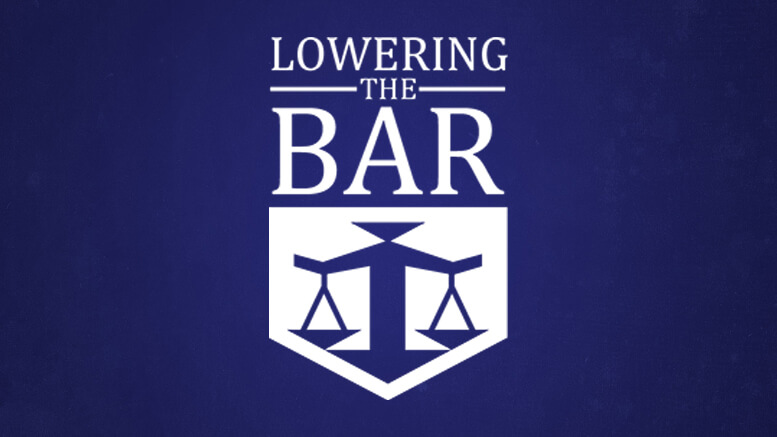Last week, a jury acquitted Kenneth Herron of a misdemeanor charge stemming from an incident in which he somehow managed to get into the Grizzly Bear Grotto at the San Francisco Zoo. Herron, who has a history of mental illness, ended up within bear-arm’s length of two 500-pound grizzlies, one of which walked over and sniffed Herron’s foot before police scared it away. Herron was extracted, arrested, and charged with trespassing and “disturbing a dangerous animal.”
The judge dismissed the trespassing charge before trial, saying there was no evidence Herron had intended to “occupy” the bear grotto. Now, you might have thought that just being in a bear grotto, let alone expending the effort it might take to get into one, would be sufficient evidence of trespassing. The district attorney sure did. “The defendant jumped an electrified wall and a separate fence, jumped 13 feet into a moat, perched himself in the grizzly bears’ living area and showed no signs of leaving before zookeepers fired a shotgun and forcibly removed him,” said a spokesman. “If that isn’t trespassing, I don’t know what is.”
But it looks like they charged Herron under a law that prohibits “[e]ntering and occupying real property or structures of any kind without the consent of the owner, the owner’s agent, or the person in lawful possession.” Cal. Penal Code § 602(m) (emphasis added). Case law holds that “occupy” requires more than a temporary stay, because the law was intended to criminalize “squatting.” (The stay in that case was much longer than in this one, probably because it didn’t involve grizzly bears.)
On the other charge, I have had trouble finding the law that makes it a crime to “disturb a dangerous animal,” which strikes me as something that doesn’t really need to be criminalized anyway. I mean, aren’t punishment and deterrence already built into that one anyway? According to one report, prosecutors charged Herron with “willfully disturbing a wild and dangerous animal, to wit, bears,” which may be a violation of the San Francisco Park Code, to wit, Section 5.08:
SEC. 5.08. DISTURBING ANIMALS, BIRDS, FISH PROHIBITED, EXCEPTIONS. [I]t shall be unlawful for any person . . . to hunt, chase, shoot, trap, discharge or throw missiles at, molest, disturb, capture, injure, or destroy any animal in any park, . . . provided, however, that any mole or any gopher, mouse, rat or other rodent which is determined by the Superintendent of Parks to be a nuisance may be destroyed by said Superintendent or a designated representative . . . .
First of all, I object to the provision allowing the Superintendent to delegate his rodent-destroying responsibilities. Given the importance of this task, and the severe consequences for the rodent, I think it is bad policy to let a public official delegate this duty to some mercenary.
As for the rest of this, assuming it is actually the section they were asserting, it would not be too surprising that the jury acquitted Herron, because most of it doesn’t apply. He didn’t chase the bears (and they weren’t fleeing). He didn’t trap or hurt them in any way. If he had tried to “molest” a grizzly bear, the ending of the story would have been very different. And so it appears to have come down to whether or not Herron had “disturbed” the bears. That’s right: because, for some reason San Francisco County decided it would be a good idea to prosecute a mentally ill man for allegedly disturbing a bear, twelve citizens had to spend time struggling with the question of how you know whether a bear has been legally disturbed. And it appears they did have to struggle:
One juror, who did not want his name used, said the panel had extensive discussions over the legal definition of “disturbance.” “A lot of people felt that because the bear didn’t immediately get up when [Herron] went in, it wasn’t ‘disturbing’ ” to the bear, the juror said.
Today’s Lowering the Bar Free Tip: If you have trouble determining whether a grizzly bear has been “disturbed,” stay the hell away from grizzly bears.
